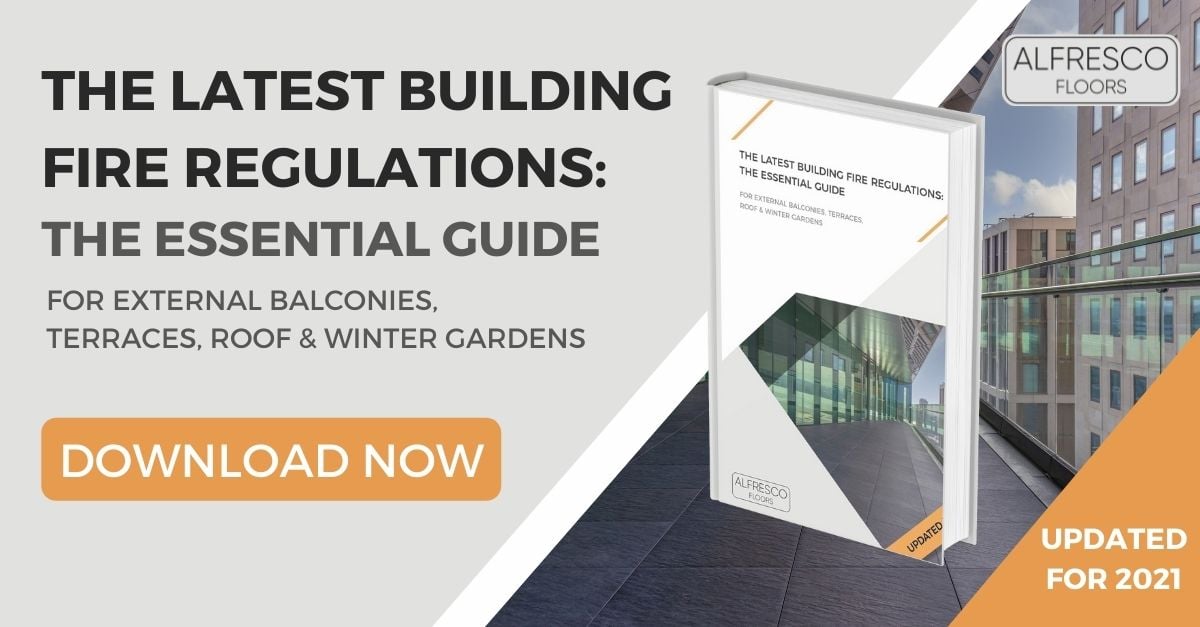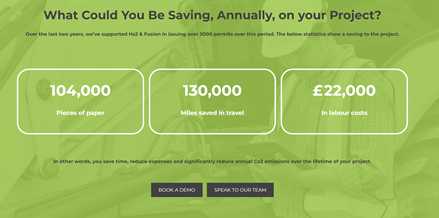
Sustainability. It's a word we hear a lot in construction right now. Some would say, with good reason.
The built environment, of which the construction sector is a crucial component, currently contributes around 40% of the UK’s carbon emissions, and it is estimated that the construction sector contributes up to 11% of global carbon emissions.
So, it’s hardly surprising to see a growing desire within the industry to go green with sustainable construction…
Avoiding The Echo Chamber

Some would argue the term 'sustainability' is overused. Whether you agree or not, one thing’s for sure: you’re operating in quite a noisy space.
And standing out in such an echo chamber can be a challenge. So, how do you offer a unique and compelling perspective on your product?
In this post, we share some insights that should help to shape your content strategy, allowing you to add a fresh dynamic to the conversation around sustainability.
The Architects of Tomorrow Are Learning About Sustainable Construction
Before we dive into the specifics, let’s contextualise a moment.
You only have to look at a university’s architecture undergraduate modules to know that the architects of tomorrow are actively learning about sustainability.
Liverpool University has a second-year module dedicated to Environmental Design, where students learn how smart design choice can reduce energy consumption. And this Curricular approach is matched across the board, with most UK architectural programs of study taking a strong stance on our global emission reduction targets within the industry.
It’s a fair assumption that, as the years go by, sustainability is going to become more of a leading factor within the specification of building materials.
What Do We Mean By Sustainability?
Sustainability is a broad concept. This can have its benefits and drawbacks.
Does your product reduce installation time? Sustainability check
Do you provide a short lead time? Sustainability check
Does your product reduce tradesmen on-site? Sustainability check
Is it manufactured in the UK? Sustainability check
All examples above will help, in some way, to reduce carbon output within building projects.
So, you’ve got a lot to build your message around. The drawback is…
Everyone is saying the same thing!
Architects Want to Learn From Manufacturers
The best way to promote your sustainable building product is to switch your focus away from sales and more on education. By education, we mean providing useful content to those involved in product selection.
With this in mind, you’ll first be required to address your content strategy. After all, to strengthen your message around sustainability, you need useful content to back it up.
If, for example, you’re using the next sustainable construction wonder additive in your floor screed, the chances are, not many people will know about it. This presents a unique opportunity to add a fresh perspective and innovate within the marketplace. But, just like the new burger on the McDonald’s menu, people need to know about your product before they choose to invest their time (and budget) in it.
Content will come in a variety of formats, but consider:
A solid construction strategy focussed on the above will ensure you’re firing on all cylinders.
Let’s look at each one in detail.
Blog posts for your building product business
Blog posts are a solid way to provide educational concepts in written formats for your audience. When paired with a strong SEO strategy, you will attract organic visitors to your site, too.
Blogs can serve a multitude of purposes. Namely, they can be promoted through email marketing and within social media posts. In other words, plenty of fresh content to distribute across multiple touchpoints.
Sample blog titles around sustainability might be:
- 6 Ways X Product Can Boost Your Project’s Sustainability
- Why X Product is a Strong Sustainable Choice
- Tips to Reduce Energy Consumption with your X product
These are just ideas. I’m sure you can be way more creative.
EBooks & Whitepapers

The above guide, written for Alfresco Floors, has helped establish the company as thought-leaders on the issue of Building Fire Regulations.
Like blog posts, these are a great way to provide written, educational content to your audience. The benefit of an eBook (or whitepaper) is that you can gate it behind a form and a landing page, creating an effective lead generation tool.
Not only will you be providing a useful resource, but you will also develop an authoritative voice within your space, PLUS you’ll be generating trackable leads that can be nurtured through your funnel.
Consider, The Ultimate Guide to Sustainability With Your X Specification.
Again, just an idea. You can probably think of better ones.
Video
The power of video is unmatched. In fact, 74% of marketers say video has a better return on investment than static imagery. So, investing in video to promote your sustainability message is a worthwhile consideration.
Email & Social Media
Both are a great platform to promote your content – whether it’s eBooks, videos or blogs. LinkedIn is home to thousands of architects, according to ARCHIVIBE, of which firms like AECOM have amassed a staggering 903k followers.
So get posting and publishing!
CPD
While undergraduates are learning about the importance of sustainability, practicing architects are continually learning about the advancements in greener structures. Your opportunities to provide value-added education are abundant. All of the above are forms of CPD, but why not create a presentation, too? This can be delivered in-person or digitally to your audience.
CPD is a great way to deepen your relationships with specifiers, which may result in further sales for you, the manufacturer. Read our guide to CPD here.
But Wait… Architects Want Quality
If you’ve ever drunk a McDonald’s milkshake through a paper straw, you’d know that sustainable products don’t always perform to the standard of their less-sustainable counterpart.
Yes, architects might be talking about sustainability. But above all else, they want a product that’s going to do the job well.
As consumers, we might be able to put up with a soggy straw from McDonald’s in the fight for the greater good (or until someone develops a better solution). But contractors won’t use a product that doesn’t perform to the same, if not better, standard of their tried and tested products.
Above all else, solve for your customer.
PROVE Your Product’s Green Credentials
Case studies are a great place to start. Demonstrating your product in-situ will show your audience that it can work in a range of environments, overcoming a multitude of challenges within the built environment.
If you can back this case study up with actual facts around carbon saving, then fantastic.
Digital permit to dig providers, Vislock, demonstrate their efficiency savings on their homepage with a visual graphic.

Some compelling stats, I’m sure you’ll agree.
Similarly, getting your product tested is a great way to demonstrate product performance. Whether it’s fire-rated, security rated or acoustic rated, this seal of approval will show the architect (and contractor) that they are working with a high-quality product worth investing in.
BREEAM Rated Developments Are More Sustainable
You can’t talk about sustainability without addressing the impact that BREEAM is having on the built environment right now. BREEAM is a sustainability assessment method for infrastructure and buildings.
Architects and contractors are working harder to improve, innovate and make effective use of resources. And BREEAM certified developments help reduce operational costs, limit investor and developer risk in building for the future, make buildings more attractive to let, sell or retain, whilst creating a healthier workplace.
Importantly, more clients are stipulating the use of BREAAM. Today there are almost 550,000 BREEAM certified developments and almost 2,250,700 buildings have been registered for assessment, according to the NBS.
Selling Your Sustainable Building Product
Creating a compelling narrative around your building product will require various considerations. Above all else, your content strategy should enable the development and creation of useful, educational content that will solve for your customer.
Quality is also important. Arguably more so than sustainability amongst the architectural and contractor community. So, your product should perform well, whilst also boasting those green credentials. Evidence of quality testing will prove your product’s merits far more than any webpage or blog post will.
Selling sustainable products will require you to adopt many of the techniques highlighted in this post. If you need any support with your sustainability content strategy, we’re here for you.
Get in touch today so we can explore your needs further.
About Insynth
At Insynth we deliver a predictable flow of leads, customers, and specifications for building product brands through our inbound marketing approach, proven to reach a technically demanding audience.
We use the latest marketing techniques such as construction inbound marketing, to equip building product companies to grow sustainability in this era of digital transformation.
As the only HubSpot certified agency to major in construction marketing. We have a proven formula of bringing a variety of functionalities together including CRM Implementation, Web Design, Sales Automation, SEO, and Email Marketing to achieve your ultimate aim: Growing your business and gaining new specifiers and customers.


